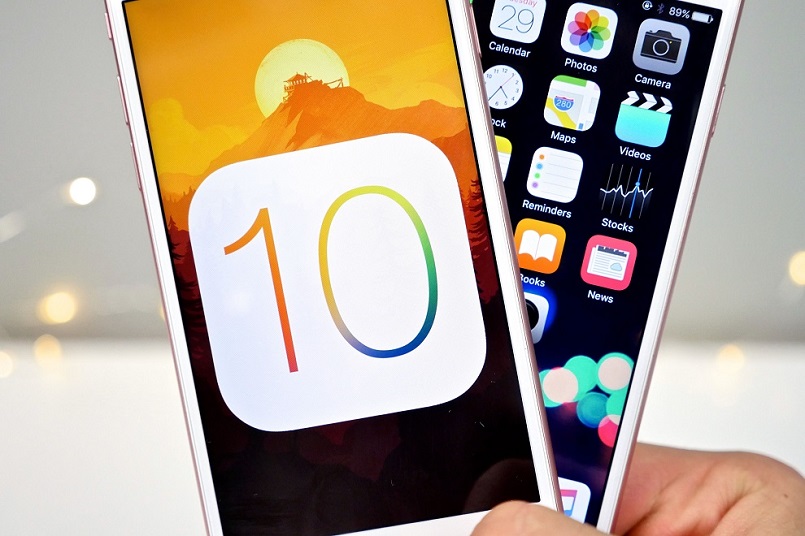
Touted the ‘biggest iOS release ever’, iOS 10 for iPhone and iPad has brought in a number of improvements and currently powers over 50 percent of iOS devices.
Apple has revealed official figures for the iOS 10 adoption. The company launched the latest iteration of its iPhone and iPad operating system back in September and in less than a month of the release, the ‘biggest iOS release ever’ is powering 54 percent of devices. iOS 10 brought in a host of features and upgrades such as zoom in feature for videos, GIF support for iMessages, and more.
According to Apple’s support page for apps, the iOS 10 is currently running on slightly above half the iPhone and iPad users, as measured by the App Store on October 7, 2016. Interestingly, third-party sources peg the adoption rate at somewhere close to 60 percent. While companies might show a boost in their adoption rates or sales to paint a positive picture, but here third-party estimates are higher. Third-party firms Mixpanel and Fiksu estimate that the software is powering as high as two-third of iOS devices. While Apple calculates iOS adoption rates by App Store visits, third-party firms calculated the percentage based on apps that use the company’s SDK.
A report on TechCrunch notes that Fiksu claims to have generated the estimates using data sampled hourly in batches of approximately 10 million events, while filtering to count unique devices. Mixpanel, on the other hand, generated the data from 300,083,243,931 records, which makes for a sample size of hundreds of millions of unique users. However, Apple’s calculation is more accurate a way of determining the exact adoption rate as it doesn’t require users to have an app installed on their device running a specific SDK from a third-party.
iOS 10, touted as Apple’s biggest iOS release ever, also came with tons of hidden features such as right swipe to delete digits on the calculator, swipe to select feature for photos, and the option to see recently closed tabs by long pressing the plus icon in Safari.
With every new iOS device, Apple also introduces the next iteration of its software. However, with every new iOS device, it also gradually phases out older devices and stops support. According to Apple’s data, while the latest iOS 10 powers 54 percent of devices, there remain eight percent of iOS devices that continue to run an older version of the operating system, while about 38 percent of devices are still content with iOS 9.
A thing to note here is that Apple did not prompt users to update to the iOS 10 software until two weeks of launch. This delay in prompting users was also spotted in the calculations made by third-party firms. The adoption rates went up sharply towards the end of September when the alert notifications were sent out to users. Whenever a new operating system is made live, it is not a smooth sail initially and developers continue to add subtle tweaks and improvements to make it perfect for masses. The delay in the notification process is due to Apple’s new policy of making the iOS rollout a smoother process, even if a slower one. It was only after the initial activity on the update slowed down that the company started telling users to upgrade based on the update available in accordance to the device in use.
If one compares it to the adoption rate of rival Google’s Android Nougat, iOS 10 is certainly enjoying more preference amongst its users. Updates to the next version of the Android operating system that powers millions of devices is controlled by manufacturers and carriers and hence, prone to not being uniformly available. Android 7.0 Nougat powers a disappointing less than 0.1 percent of Android devices. Although Nougat is the latest version of the Google operating system, Android 5.0 Lollipop, which was introduced way back in 2014, remains one of the most popular and widely adopted operating systems till date with about 35 percent devices running the OS. Even after entering fully into the smartphone game with its Pixel phones, Google is still allowing carriers to handle system updates, except for security patches.
Despite its visibly higher adoption rates, iOS 10 in the past has been blamed for bricking devices. Users who tried to download the iOS 10 update when it was first made available faced temporary freezing of the devices. The issue was later resolved by Apple. The latest update to iOS 10 is version 10.0.2. However, according to some reports, the new version is marred by certain problems including battery drain, issues with Wi-Fi, Bluetooth, impromptu reboots, lags, issues with Touch ID, photo syncing issues, among others. iOS 10.1 version is currently under beta and is expected to resolve these issues once it makes to consumer devices.
Source: bgr.in









































